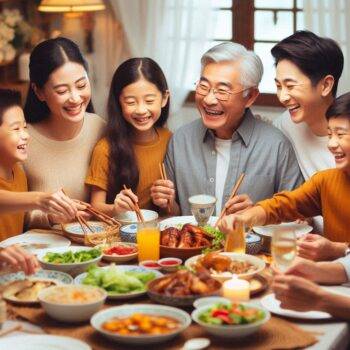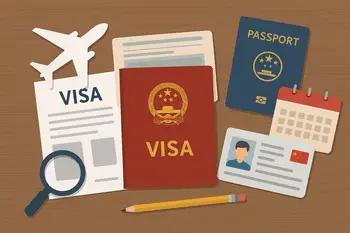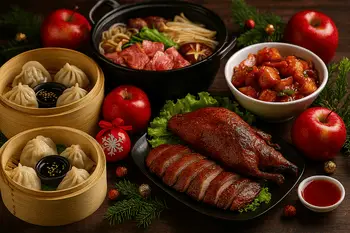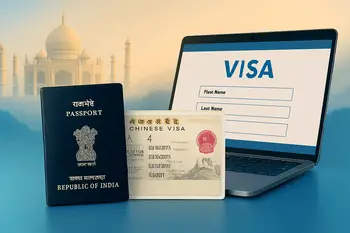
China’s rich cultural heritage is deeply intertwined with its family dynamics and values.
These principles, rooted in Confucian teachings, have shaped Chinese society for centuries, fostering strong bonds, mutual respect, and a collective sense of responsibility.
In this post, we explore the historical roots, modern adaptations, and enduring significance of Chinese family dynamics, while also addressing contemporary challenges and providing practical insights.
Historical Foundations of Chinese Family Values
Chinese family values are deeply rooted in Confucianism, which emphasizes harmony, filial piety, and collective responsibility.
Below are the key principles that have historically shaped family life in China:
| Principle | Description |
|---|---|
| Filial Piety (Xiao) | Reverence for parents and elders, prioritizing their well-being and honoring their wisdom. |
| Patriarchal Structure | Traditionally, the father was the head of the household, responsible for decision-making. |
| Extended Family Bonds | Family includes not just immediate relatives but also ancestors and extended kin, fostering unity and continuity. |
Example: Filial piety is often expressed through ancestor worship, where families honor their ancestors with offerings and rituals during festivals like Qingming (Tomb-Sweeping Day).
Resource: Learn more about Confucianism and its influence on Chinese culture at Stanford Encyclopedia of Philosophy.
Modern Chinese Family Dynamics
While traditional values remain influential, modern Chinese families have adapted to societal changes brought about by urbanization, economic development, and globalization.
Key changes include:
| Aspect | Traditional View | Modern Adaptation |
|---|---|---|
| Family Structure | Large extended families living together. | Smaller nuclear families due to urbanization. |
| Gender Roles | Women primarily responsible for household duties. | Women increasingly pursuing careers alongside family responsibilities. |
| Intergenerational Roles | Elders as primary decision-makers and caregivers. | Grandparents often help raise children, but younger generations have more independence. |
Example: In urban areas, it is common for grandparents to move in with their children to help care for grandchildren, reflecting the enduring importance of extended family support.
Key Values in Chinese Family Life
Despite modern changes, certain values remain central to Chinese family life:
| Value | Description |
|---|---|
| Harmony (He) | Maintaining peace and balance within the family unit is paramount. |
| Collective Responsibility | Individual desires are often subordinate to the needs of the family as a whole. |
| Education and Success | Academic achievement is highly valued, symbolizing family honor and upward mobility. |
Resource: For insights into the role of education in Chinese families, visit China Education Center.
Contemporary Challenges and Adaptations
Modern Chinese families face unique challenges as they navigate the balance between tradition and modernity:
| Challenge | Description | Example |
|---|---|---|
| Balancing Tradition and Modernity | Younger generations may prioritize independence over traditional family obligations. | Choosing careers in distant cities over staying close to family. |
| Work-Life Balance | Urbanization and career demands often strain family relationships. | Long working hours leave less time for family interactions. |
| Cultural Shifts | Western influences have introduced more individualistic values, especially among younger people. | Couples opting for smaller families or delaying marriage. |
Tip: Open communication between generations can help bridge the gap between traditional expectations and modern aspirations.
Practical Tips for Understanding Chinese Family Dynamics
- Learn About Confucian Principles: Understanding the philosophical roots of Chinese family values can provide valuable insights into their behavior and expectations.
- Respect Cultural Practices: Show respect for traditions like ancestor worship, family gatherings, and filial piety.
- Adapt to Modern Changes: Recognize that family dynamics in urban areas may differ significantly from those in rural regions.
- Engage with Families: Participate in family activities and celebrations to build stronger relationships and show cultural appreciation.
Resource: For practical advice on navigating Chinese culture, visit Internations China.
Visualizing Traditional vs. Modern Family Dynamics
| Aspect | Traditional Family | Modern Family |
|---|---|---|
| Living Arrangements | Multi-generational households. | Smaller nuclear families, often in urban apartments. |
| Decision-Making | Elders as primary decision-makers. | Decisions often made collectively or by younger members. |
| Marriage | Arranged marriages were common. | Love marriages are now the norm, with more couples delaying marriage. |
| Parenting | Strict, hierarchical parenting styles. | More democratic and child-centered approaches. |
Conclusion
Chinese family dynamics and values are a testament to the country’s rich cultural heritage and adaptability.
While rooted in Confucian principles, modern families have evolved to meet the demands of a rapidly changing society.
By understanding these principles and their modern adaptations, one can gain a deeper appreciation for the intricate tapestry of Chinese society.
Whether you’re a visitor, expatriate, or simply curious, exploring Chinese family values offers a window into the heart of this fascinating culture.


